Kam Bava breathes new life into the Barbican sunken bars
We visit the restoration and interiors refresh of the Barbican sunken bars by London architect Kam Bava
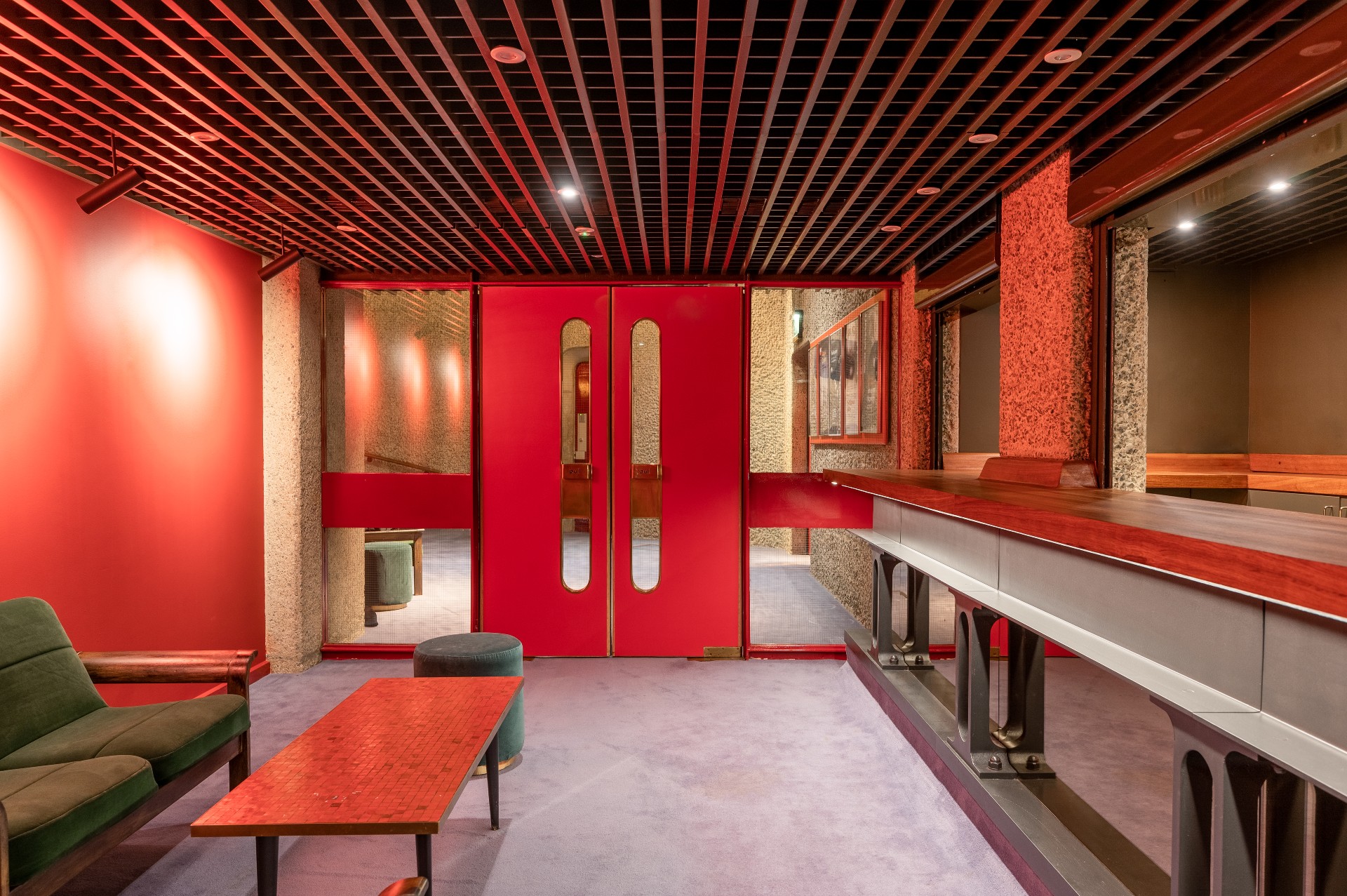
Emily Marshall - Photography
The much loved Barbican Estate in London comprises many parts and elements – from its famed performing arts centre, a key cultural hub in the City of London and beyond and the largest of its kind in Europe, to its iconic residences, outdoor spaces and brutalist architecture environment. Its scale means that there are many smaller areas, however, which often remain lesser-known, yet are no less important to the Barbican experience. Part of the Grade II-listed Barbican Centre Theatre, the Barbican sunken bars are two hospitality corners of the seminal modernist development, constructed between 1965 and 1971 and located under the steps of the theatre. The spaces were in need of a refresh, so London architect Kam Bava was asked to lead a careful restoration and interior redesign to breathe new life to the complex's much-loved leisure offering.
The bars’ facelift was not just about aesthetic fixes and a superficial polish. The architect ensured a technical upgrade was incorporated as well, because, after years of intensive use, the listed fabric was in dire need of an update. Seeking to maintain the interior's original character, as well as emphasise reuse and recycling as an approach, Bava cleverly redeployed elements found within the Barbican campus. ‘The steel bar structure is made from the handrails on the [Barbican] centre, and the ceiling comes from the art gallery. The handling of these pieces together with the use of mirrors creates a very different scale of experience, using very familiar design cues,' he explains.
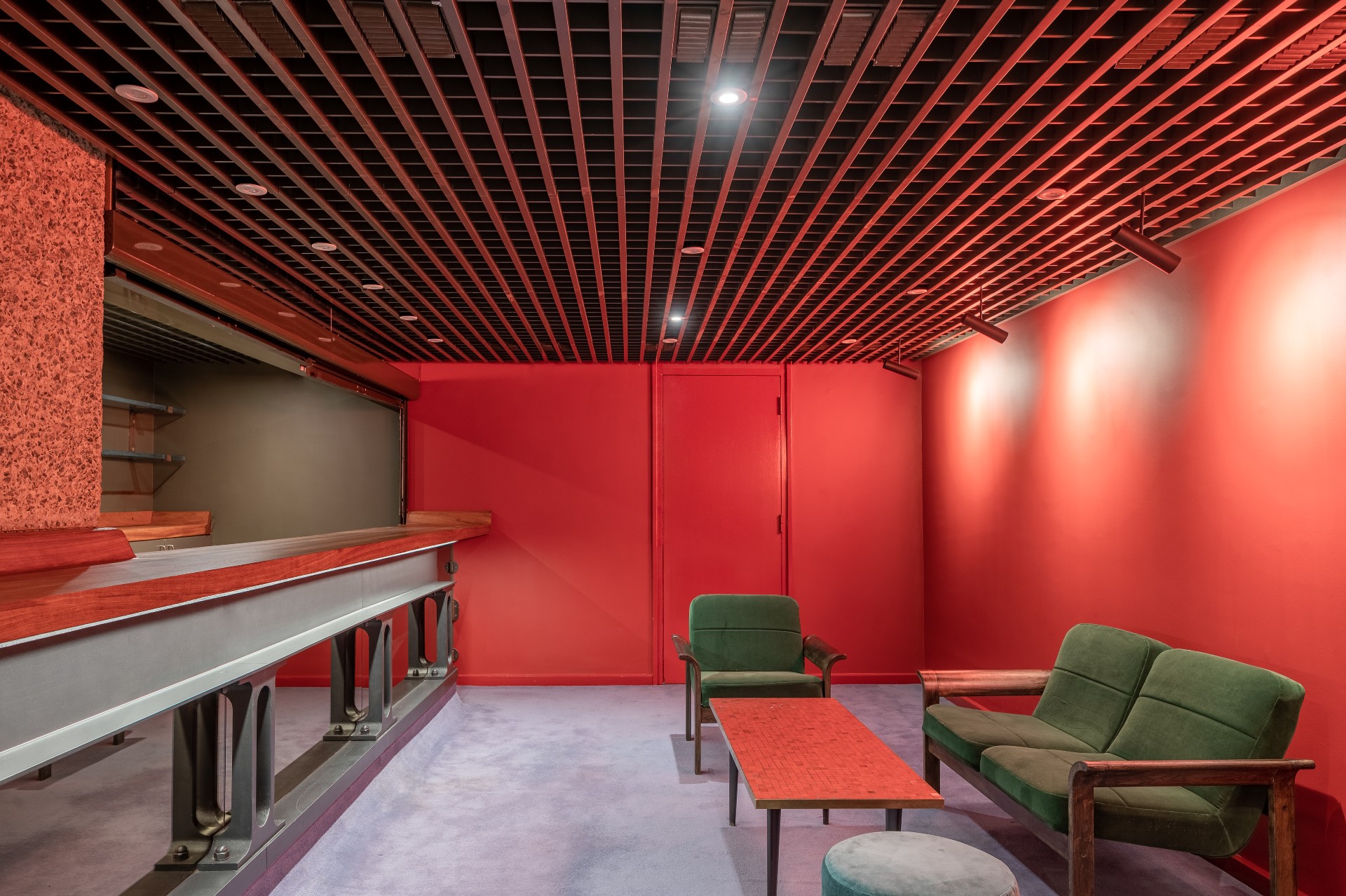
He continues: ‘We wanted to intensify this interesting play on scale whilst highlighting the forgotten qualities of the spaces. With the use of improved lighting focusing on elements of the bar, key walls and the use of original Barbican colours, we have struck a balance between conservation and recognising the intensive and varied use of these spaces in a modern institution.' Existing furniture was reupholstered, while any new features were conceived to respect the spirit of the existing design.
Cleaning up the interior included practical yet necessary gestures, such as asbestos removal, reworking of the lighting, security, visitors’ facilities such WC, bar operation facilities such as washing, serving and refrigeration, and improving storage. It all results in a set of spaces, the new Barbican sunken bars, that feel respectful and celebratory of the estate's long and important history, while at the same time are fit for 21st-century use.
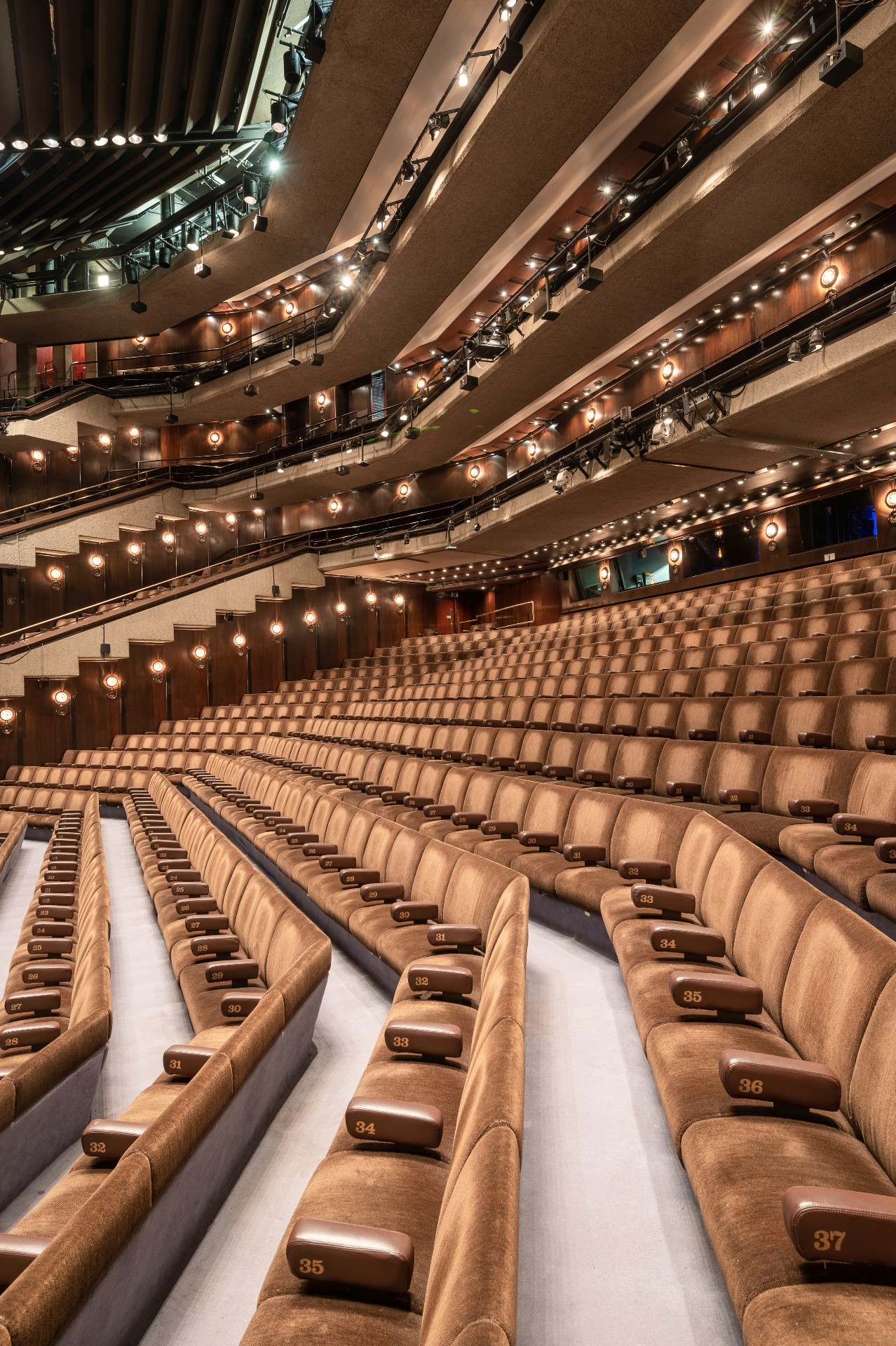
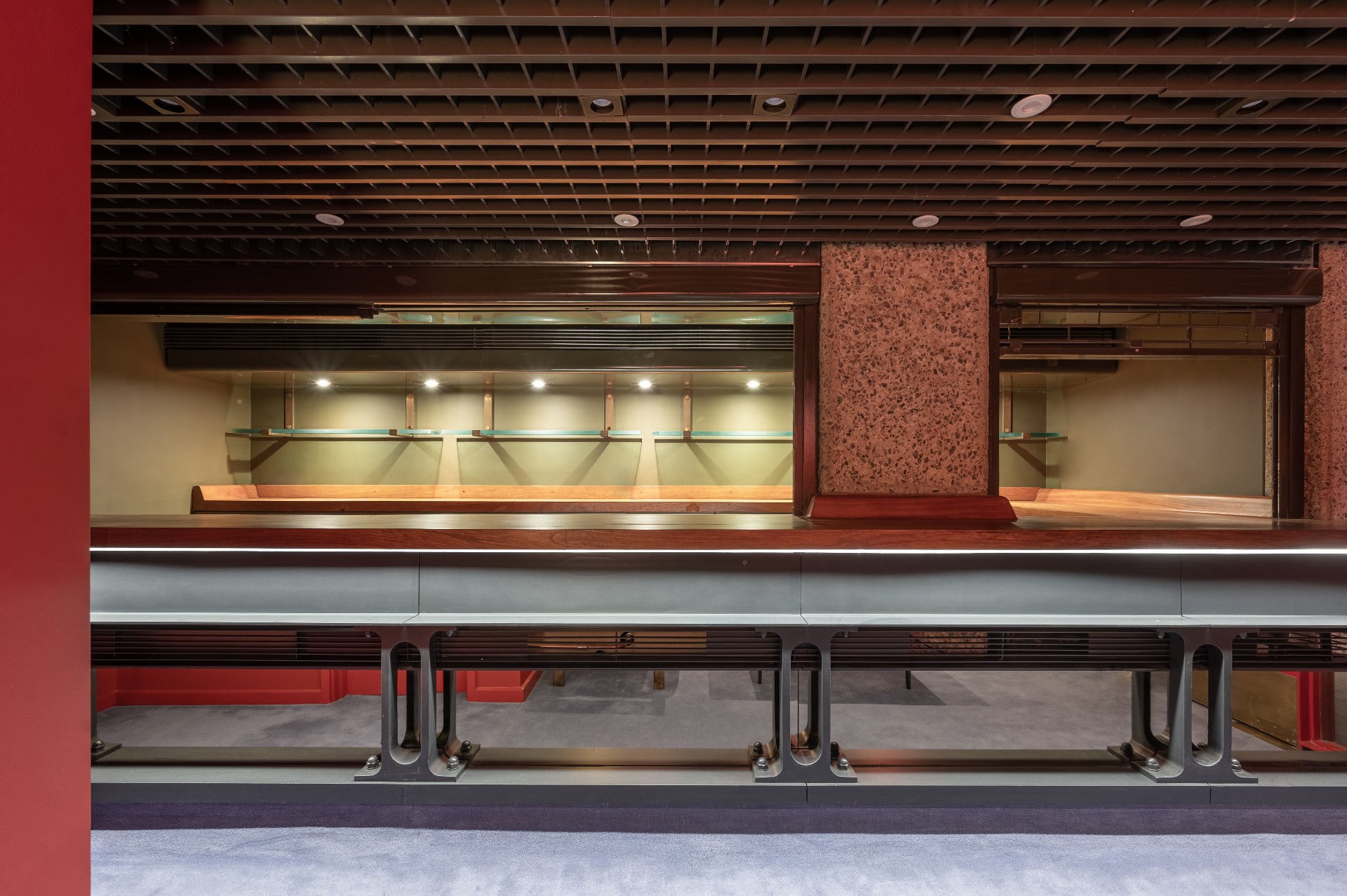
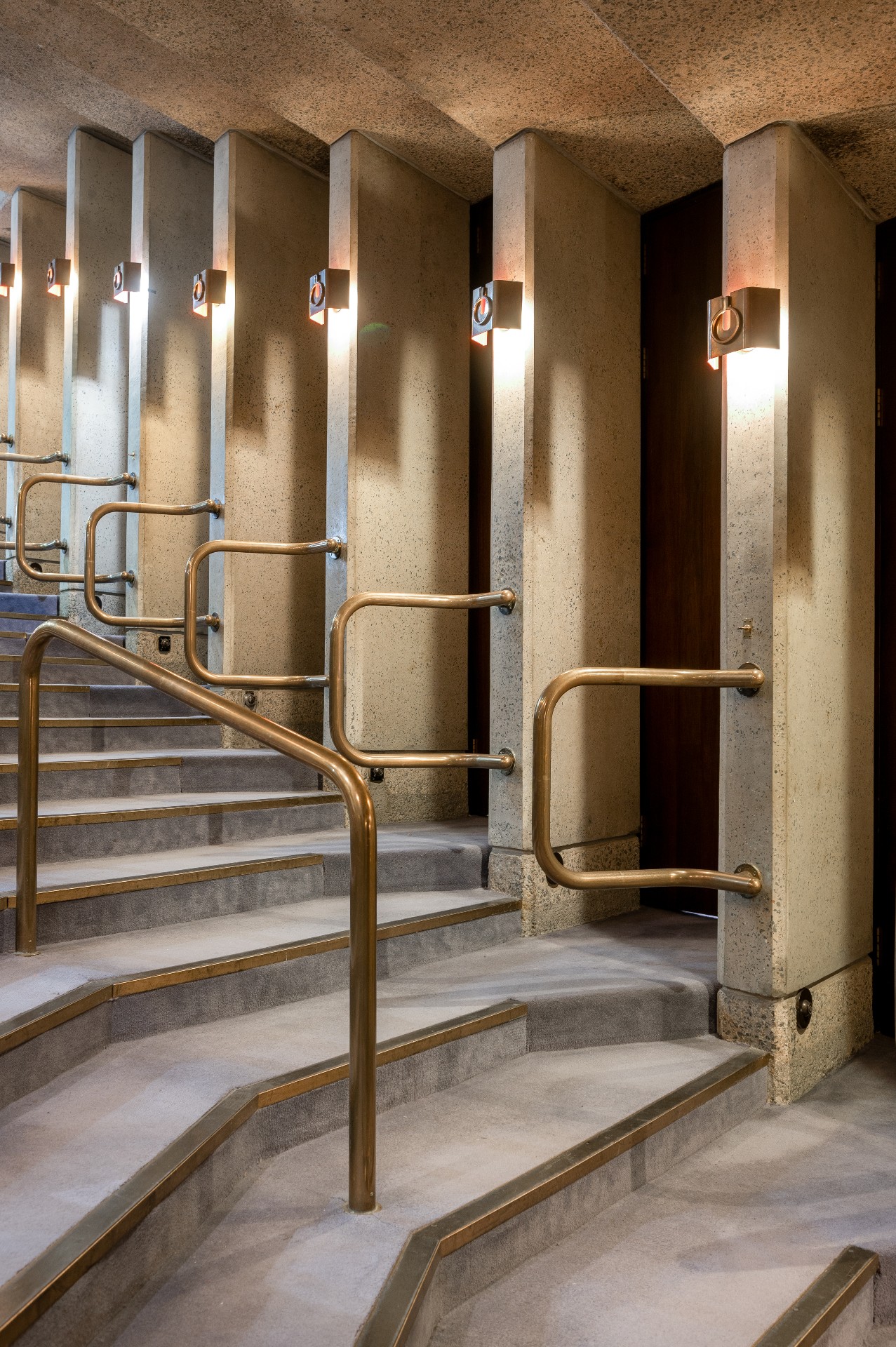
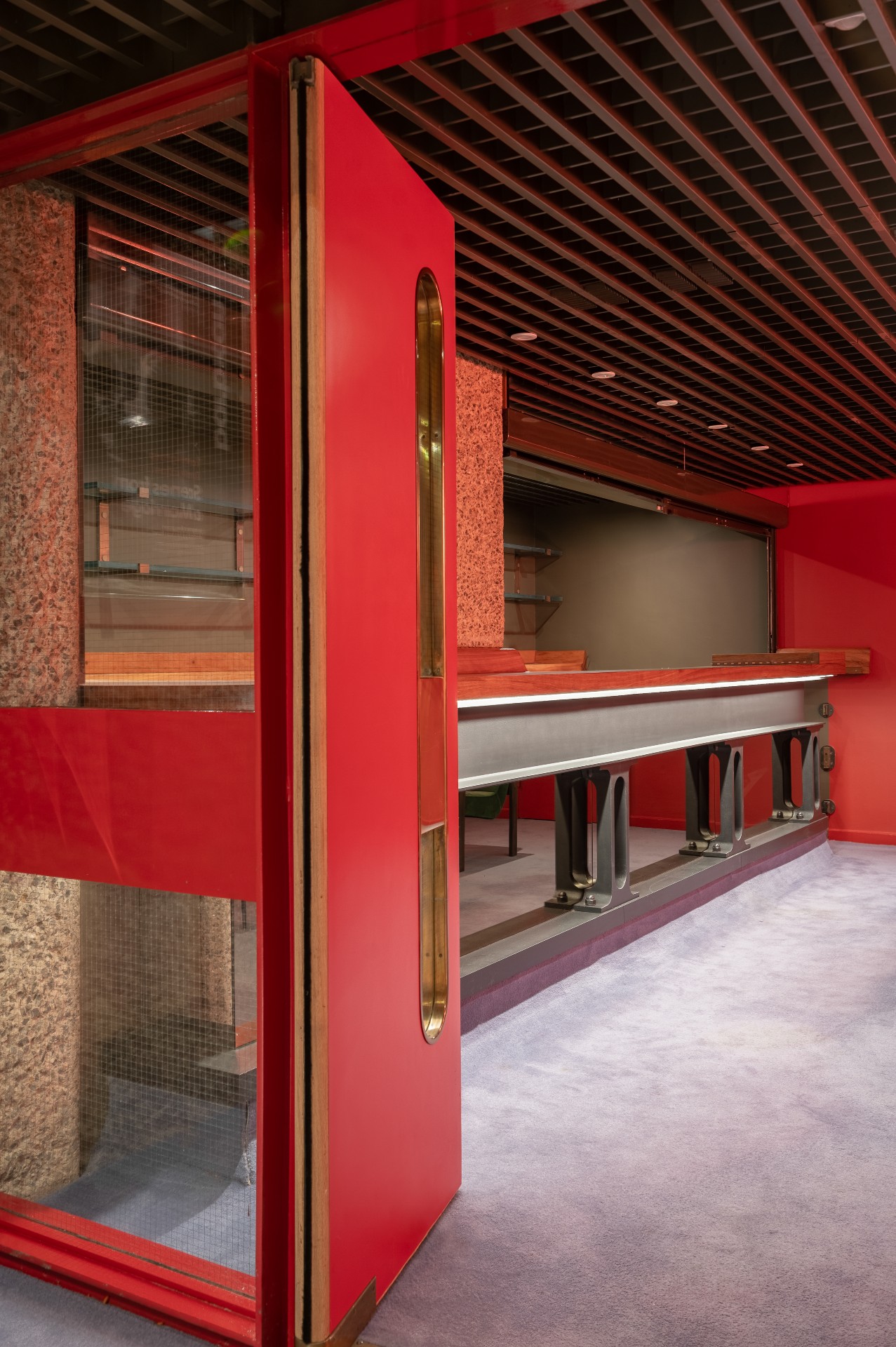
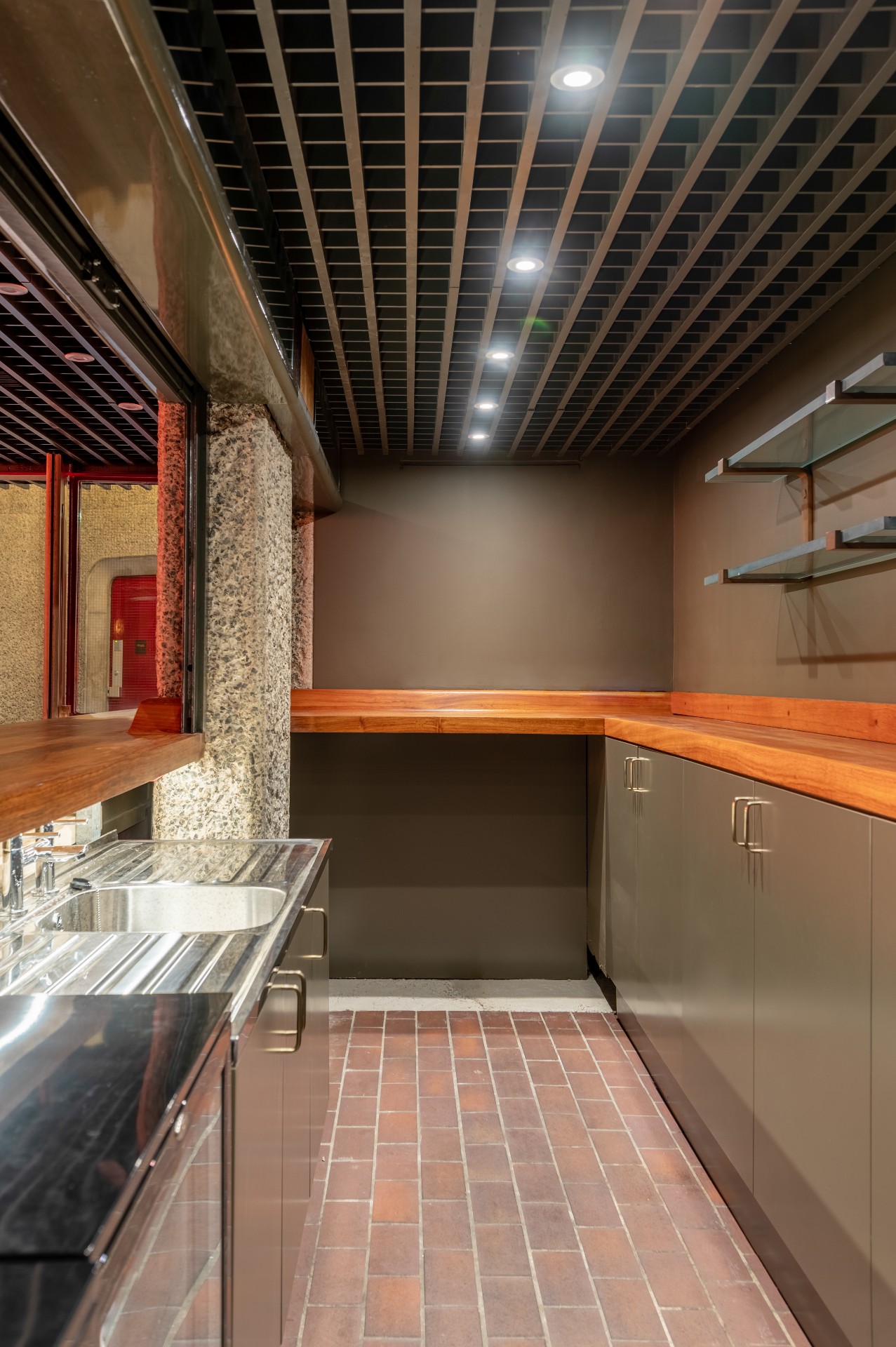
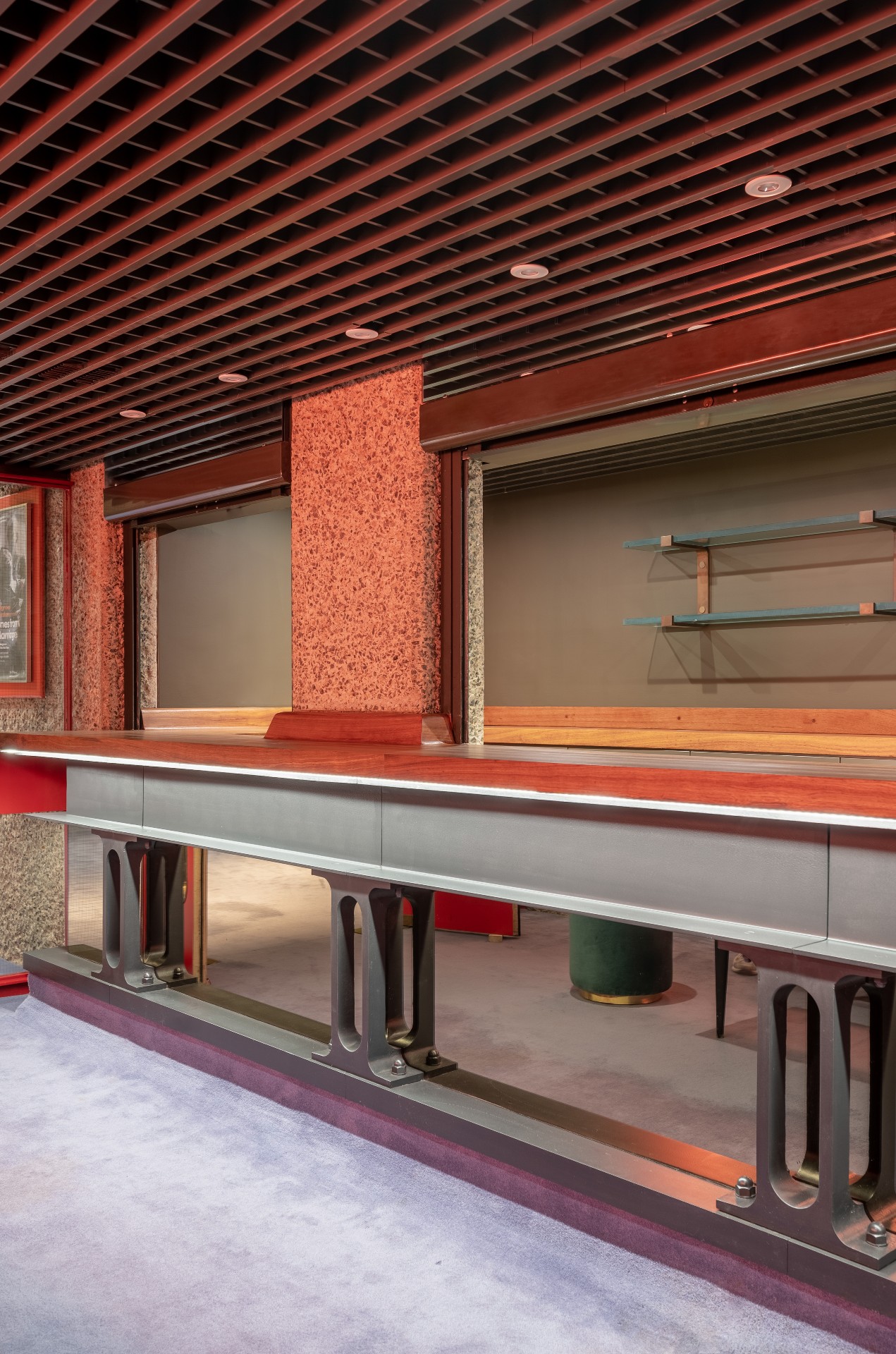
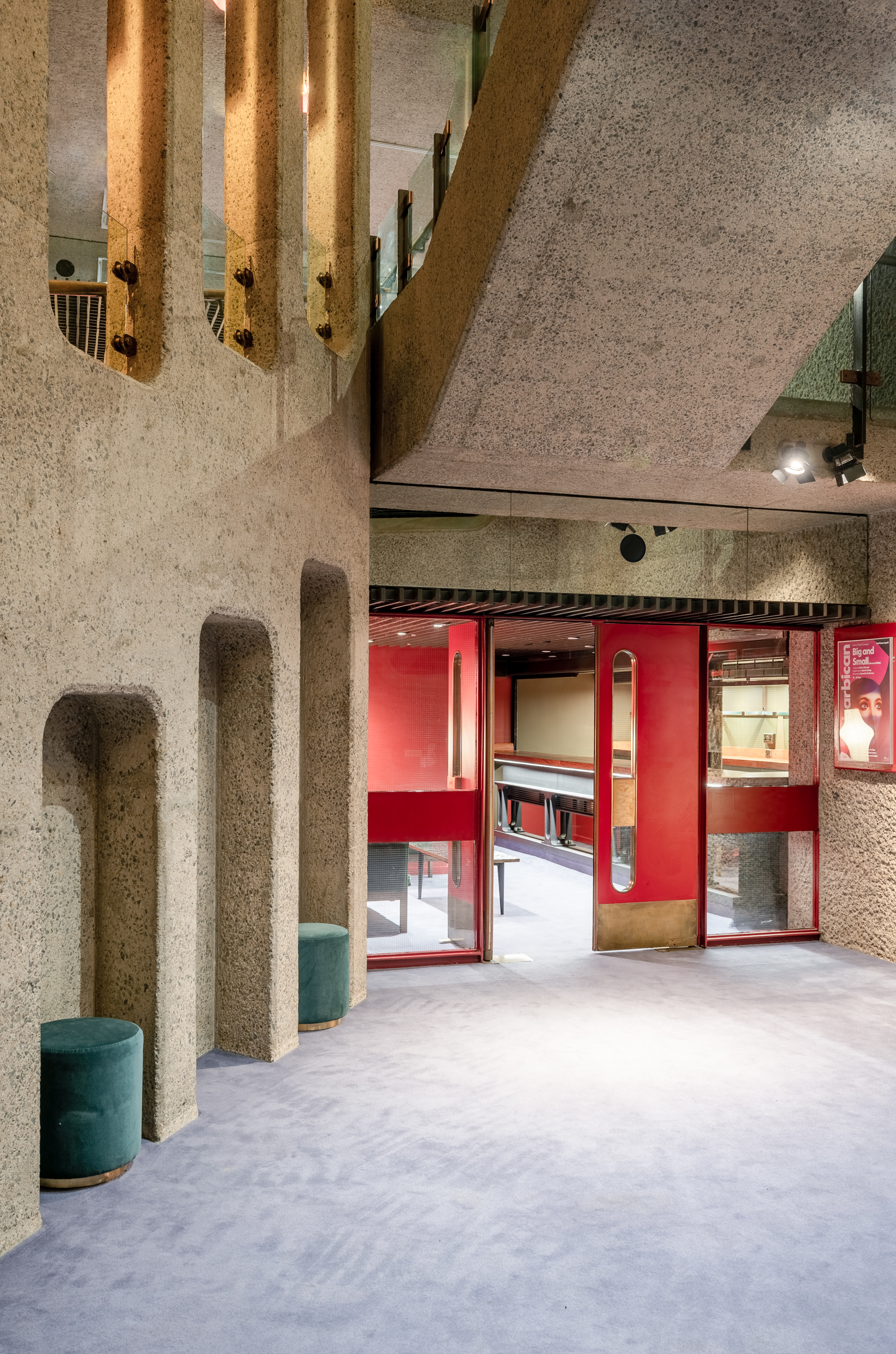
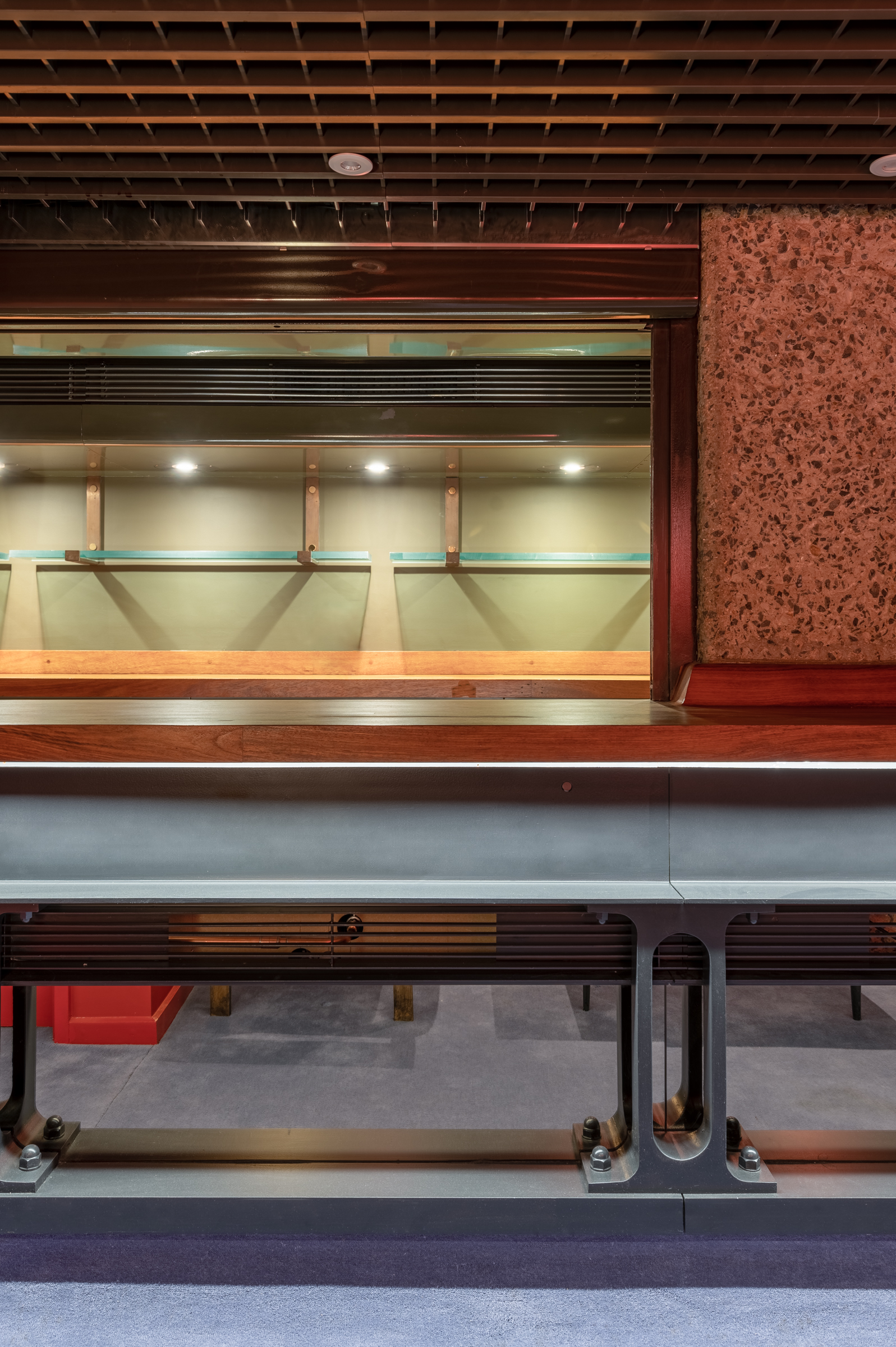
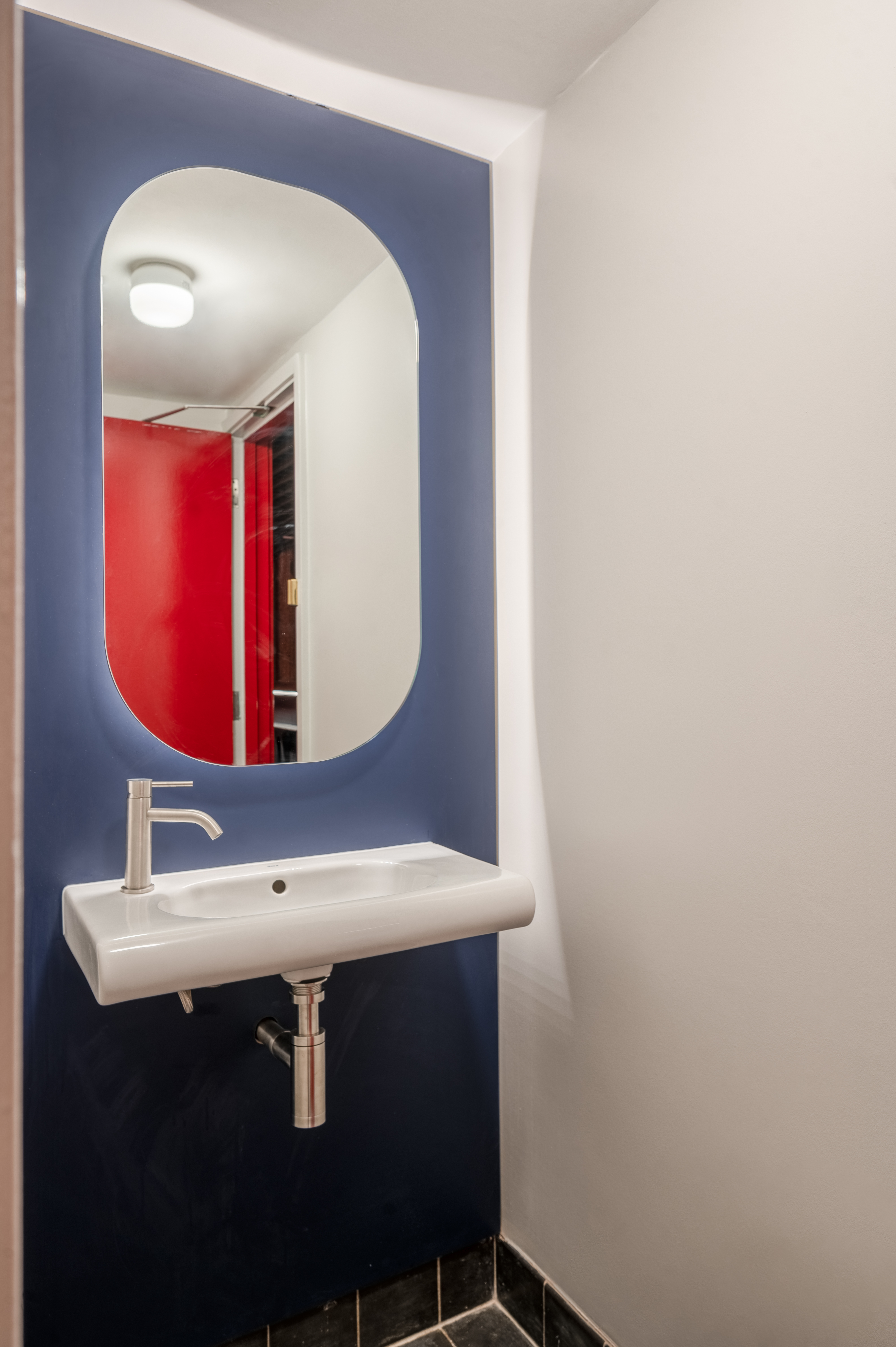
INFORMATION
Receive our daily digest of inspiration, escapism and design stories from around the world direct to your inbox.
Ellie Stathaki is the Architecture & Environment Director at Wallpaper*. She trained as an architect at the Aristotle University of Thessaloniki in Greece and studied architectural history at the Bartlett in London. Now an established journalist, she has been a member of the Wallpaper* team since 2006, visiting buildings across the globe and interviewing leading architects such as Tadao Ando and Rem Koolhaas. Ellie has also taken part in judging panels, moderated events, curated shows and contributed in books, such as The Contemporary House (Thames & Hudson, 2018), Glenn Sestig Architecture Diary (2020) and House London (2022).
-
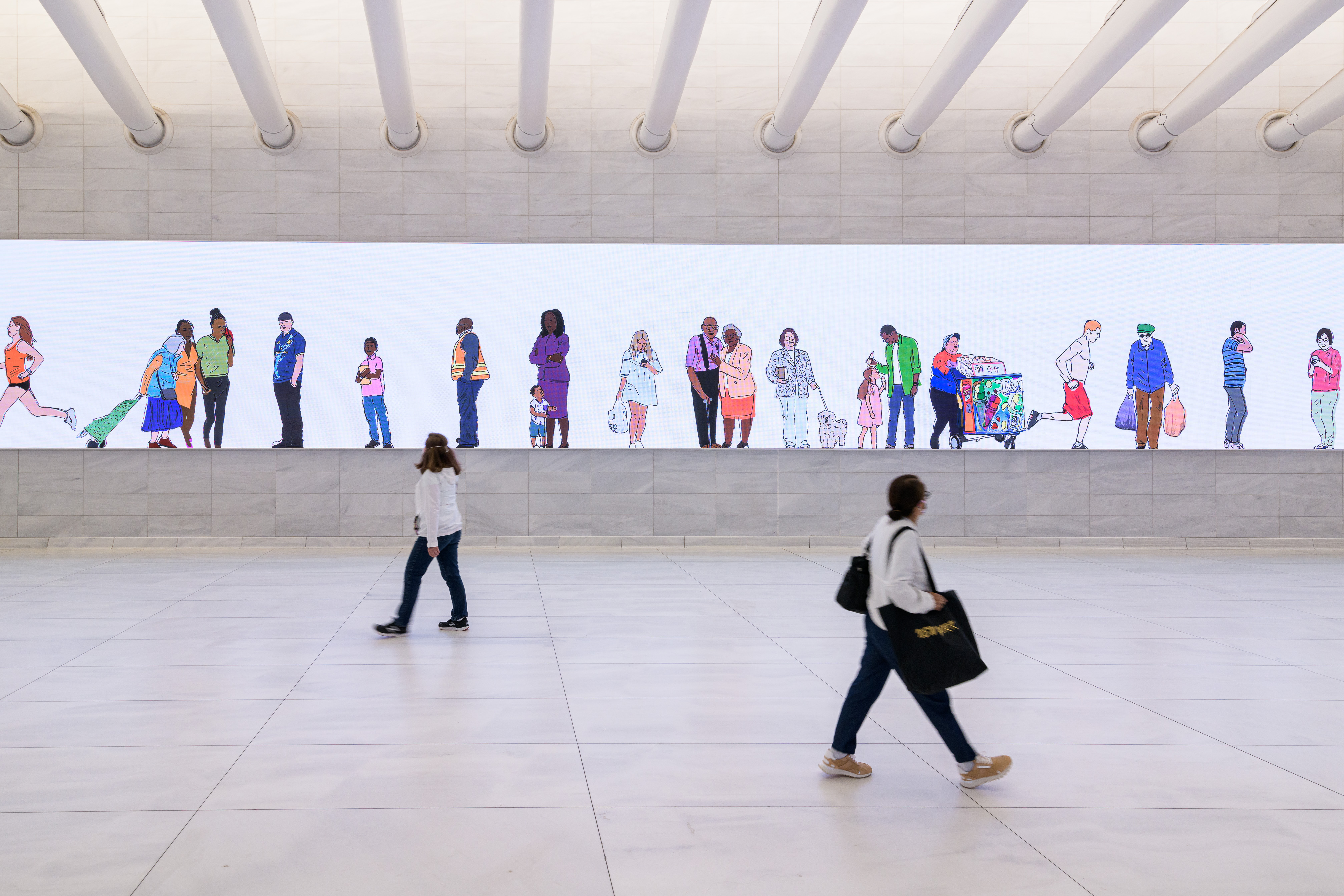 'Design at its most ambitious': meet the 2025 Royal Designers for Industry
'Design at its most ambitious': meet the 2025 Royal Designers for IndustryThe Royal Society for Arts announces the five new Royal Designers for Industry as well as two Honorary Royal Designers for Industry
-
 A new art museum brings colour, quirk and a celebration of creativity to Doha
A new art museum brings colour, quirk and a celebration of creativity to DohaLawh Wa Qalam: M. F. Husain Museum is awash with colour and character, courtesy of Indian architect Martand Khosla and the Qatar Foundation
-
 Out of office: The Wallpaper* editors’ picks of the week
Out of office: The Wallpaper* editors’ picks of the weekThis week, the Wallpaper* team had its finger on the pulse of architecture, interiors and fashion – while also scooping the latest on the Radiohead reunion and London’s buzziest pizza
-
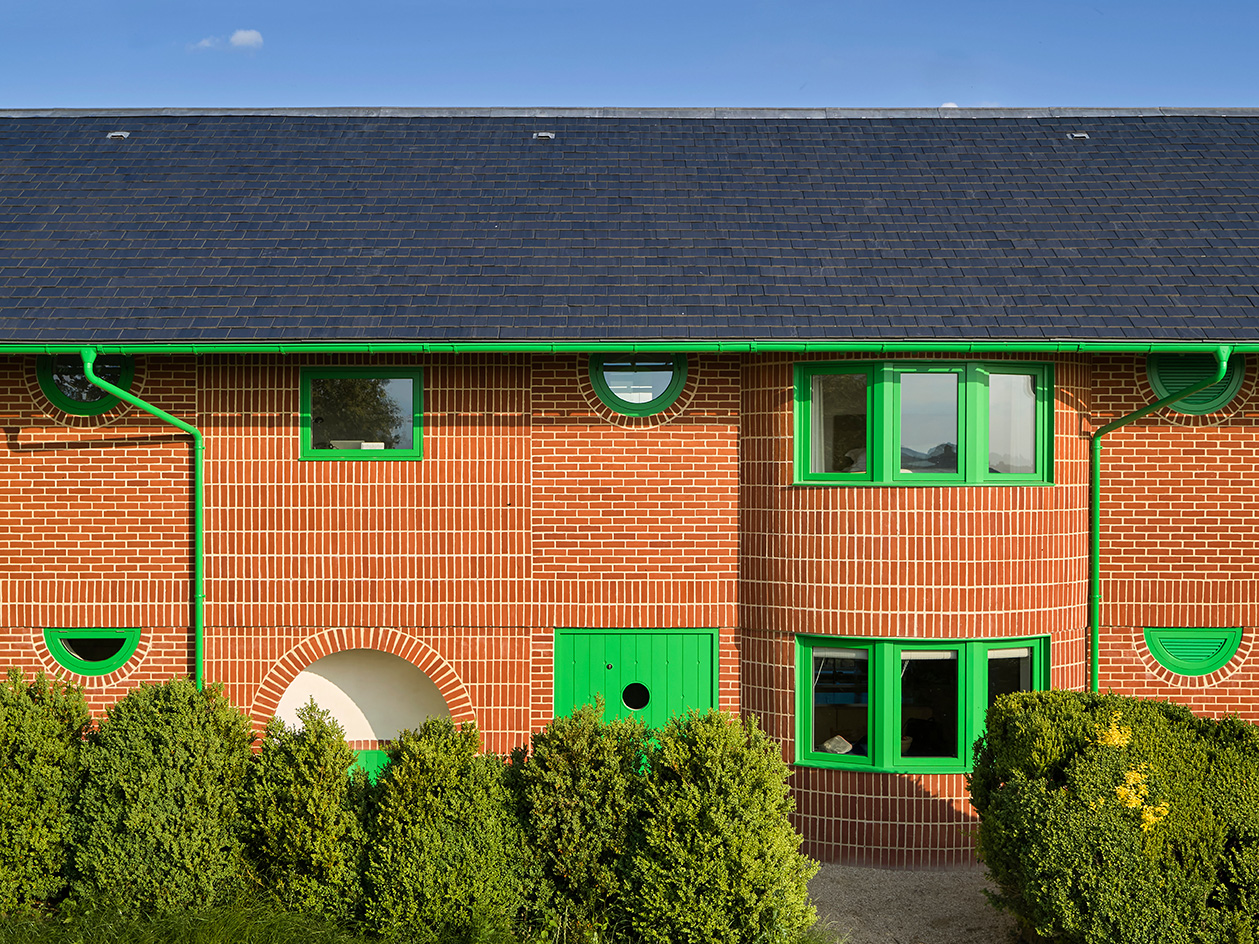 David Kohn’s first book, ‘Stages’, is unpredictable, experimental and informative
David Kohn’s first book, ‘Stages’, is unpredictable, experimental and informativeThe first book on David Kohn Architects focuses on the work of the award-winning London-based practice; ‘Stages’ is an innovative monograph in 12 parts
-
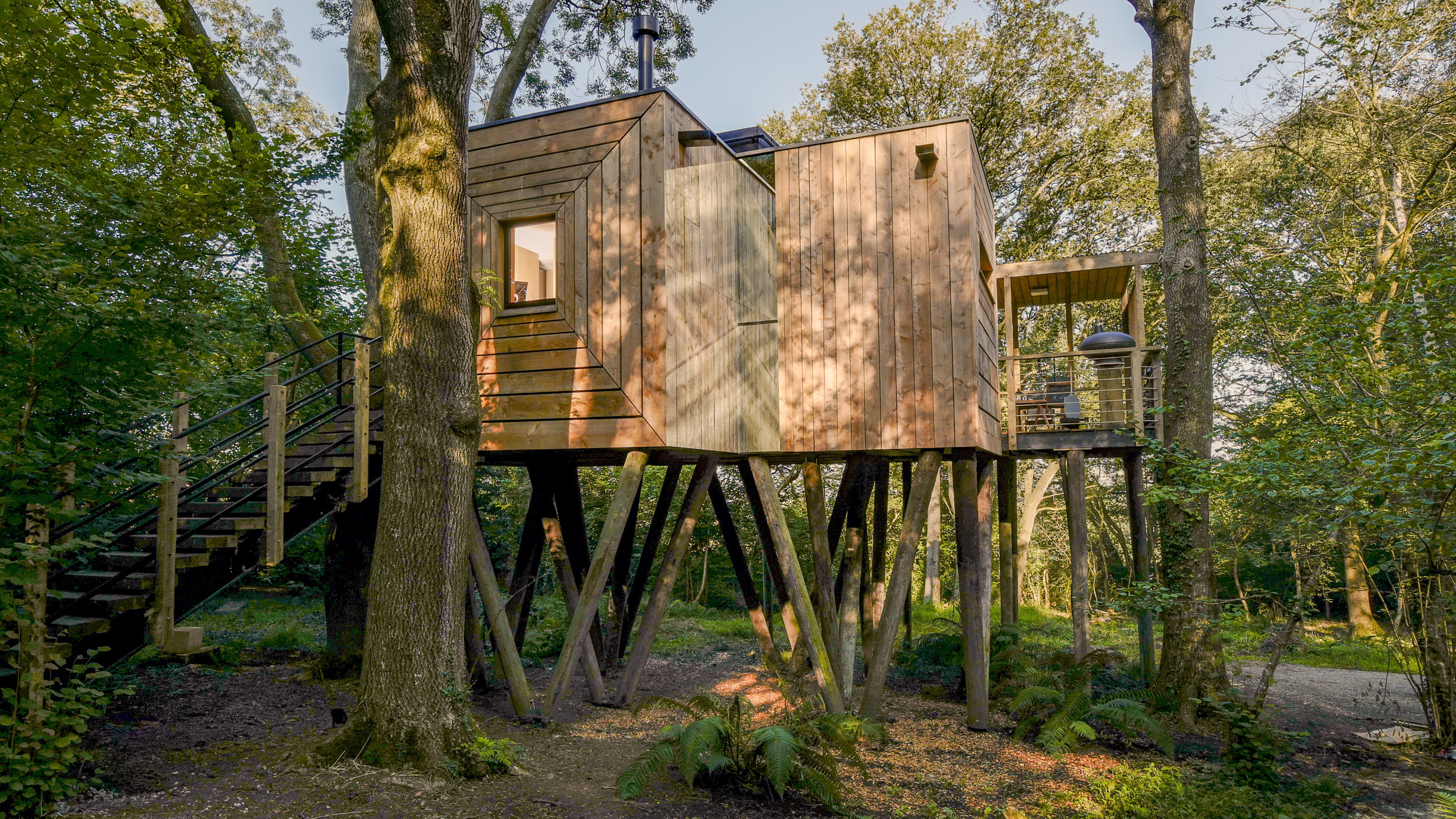 Find solace in the forest at this expansive treehouse retreat in Dorset
Find solace in the forest at this expansive treehouse retreat in DorsetFor sale for the first time, a treehouse, Mallinson’s Woodland Retreat, is a tribute to the skill of designer and master craftsman Guy Mallinson
-
 Modernist Scotland explores the country’s impressive legacy of contemporary architecture
Modernist Scotland explores the country’s impressive legacy of contemporary architectureA new book, Modernist Scotland, delves into the art and ambitions of the International Style in post-war Scotland, presenting 150 projects that typify an age of optimism and innovation.
-
 100 George Street is the new kid on the block in fashionable Marylebone
100 George Street is the new kid on the block in fashionable MaryleboneLondon's newest luxury apartment building brings together a sensitive exterior and thoughtful, 21st-century interiors
-
 Take a tour of Retrofit House, the live showcase inspiring sustainable homebuilding
Take a tour of Retrofit House, the live showcase inspiring sustainable homebuildingRetrofit House, a showcase for residential redesign using biomaterials and environmentally smart methods, opens in Birmingham, UK, spearheaded by Civic Square, Dark Matter Labs and Material Cultures; we paid it a visit
-
 How Maggie’s is redefining cancer care through gardens designed for healing, soothing and liberating
How Maggie’s is redefining cancer care through gardens designed for healing, soothing and liberatingCancer support charity Maggie’s has worked with some of garden design’s most celebrated figures; as it turns 30 next year, advancing upon its goal of ‘30 centres by 30’, we look at the integral role Maggie’s gardens play in nurturing and supporting its users
-
 Futuristic-feeling Southwark Tube Station has been granted Grade II-listed status
Futuristic-feeling Southwark Tube Station has been granted Grade II-listed statusCelebrated as an iconic piece of late 20th-century design, the station has been added to England’s National Heritage List
-
 Archiboo Awards 2025 revealed, including prizes for architecture activism and use of AI
Archiboo Awards 2025 revealed, including prizes for architecture activism and use of AIArchiboo Awards 2025 are announced, highlighting Narrative Practice as winners of the Activism in architecture category this year, among several other accolades